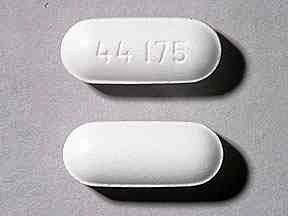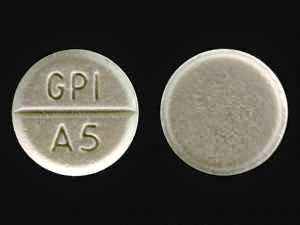ACETAMINOPHEN AND TRAMADOL
(a SEET a MIN o fen and TRAM a dol) Brand: Ultracet










What is the most significant information I must know about acetaminophen and tramadol?
• You must not use this medication if you have recently used alcohol, sedatives, tranquilizers, or another narcotic medications.
• Do not take more of this medicine than is recommended. An overdose of acetaminophen can hurt your liver or reason death. Call your doctor at once if you have nausea, pain in your upper stomach, itching, loss of appetite, dark urine, clay-colored stools, or jaundice (yellowing of your skin or eyes).
• In rare cases, acetaminophen may reason a severe skin reaction. Stop taking this medication and call your doctor right away if you have skin redness or a rash that spreads and causes blistering and peeling.
• Acetaminophen and tramadol may be habit-forming and must be used only by the face it was predesigned for. Never share this medicine with other face, especially somebody with a history of drug abuse or addiction. Hold the medicine in a seat where others can't get to it.
What is acetaminophen and tramadol?
• Tramadol is a narcotic-like pain reliever. Acetaminophen is a smaller potent pain reliever that increases the effects of tramadol.
• Acetaminophen and tramadol is a combination medication used to treat temperate to severe pain.
• Acetaminophen and tramadol may also be used for purposes not listed in this medicine guide.
What must I discuss with my healthcare provider till taking acetaminophen and tramadol?
• You must not use this if you are allergic to acetaminophen (Tylenol, or if you have recently used alcohol, sedatives, tranquilizers, or another narcotic medications.
• Seizures have occurred in some people taking acetaminophen and tramadol. Your risk of a seizure may be higher if you have any of these conditions:
· a history of drug or alcohol addiction;
· a history of epilepsy or another seizure disorder;
· a history of head injury;
· a metabolic disorder;
· an infection of your brain or spinal cord, such as meningitis or encephalitis;
· if you are also taking an antidepressant, mood stabilizer, or other narcotic pain medication; or
· if you have taken an MAO inhibitor (isocarboxazid, linezolid, methylene blue injections, phenelzine, rasagiline, selegiline, tranylcypromine) within the past 14 days.
• To create certain acetaminophen and tramadol is safety for you, speak your doctor if you have:
· liver malady, cirrhosis, a history of alcoholism, or if you drink more than 3 alcoholic beverages for day;
· kidney disease;
· asthma or another breathing disorder;
· a stomach mess; or
· a history of depression, mental diseases, or suicide attempt.
• Acetaminophen and tramadol may be habit forming. Never share this medication with other face, especially somebody with a history of drug abuse or addiction. Hold the medicine in a seat where others can't get to it.
• FDA pregnancy category C. It is not known whether the combination of acetaminophen and tramadol is deleterious to an unborn child. Tramadol alone may have caused serious or fatal side effects in newborns of mothers who used the medicine during pregnancy or labor. Speak your doctor if you are pregnant or plan to become pregnant during treatment with acetaminophen and tramadol.
• Acetaminophen and tramadol can pass into breast milk and may harm a nursing child. You must not breast-feed while using this medicine.
How must I take acetaminophen and tramadol?
• Follow all directions on your prescription label. Never take this medication in larger amounts, or for longer than predesigned. An overdose can hurt your liver or reason death. Speak your doctor if the medication seems to stop working as well in relieving your pain.
• Acetaminophen and tramadol can be taken with or without food, but take it the same way every time.
• The maximum amount of acetaminophen and tramadol is 2 tablets for doze, or 8 tablets for day. Acetaminophen and tramadol must not be used for longer than 5 days in a row.
• Do not stop using acetaminophen and tramadol suddenly after long-term use, or you could have unpleasant withdrawal symptoms. Ask your doctor how to avoid withdrawal symptoms when you stop using acetaminophen and tramadol.
• Store at room temperature away from moisture and heat.
• Hold track of the amount of medication used from every new bottle. Acetaminophen and tramadol is a drug of abuse and you must be aware if anyone is using your medication improperly or without a prescription.
What happens if I miss a dose?
• Since pain medication is taken as needed, you may not be on a dosing schedule. If you are taking the medicine regularly, take the missed doze as soon as you remember. Skip the missed doze if it is nearly time for your following scheduled doze. Do not take extra medication to create up the missed dose.
What happens if I overdose?
• Search abnormal medical attention or call the Poison Help line at 1-800-222-1222. An acetaminophen and tramadol overdose can be fatal.
• The first signs of an acetaminophen overdose include loss of appetite, nausea, vomiting, stomach pain, sweating, and confusion or weakness. Later symptoms may include pain in your upper stomach, dark urine, and yellowing of your skin or the whites of your eyes.
• Overdose symptoms may also include shallow breathing, slow heartbeat, extreme weakness, cool or clammy skin, feeling light-headed, fainting, seizure, or coma.
What must I avoid while taking acetaminophen and tramadol?
• Do not drink alcohol while you are taking acetaminophen and tramadol. Alcohol may reason a dangerous decrease in your breathing when used together with acetaminophen and tramadol. Alcohol may also magnify your risk of liver hurt while taking acetaminophen.
• Acetaminophen and tramadol may impair your thinking or reactions. Be careful if you drive or do anything that requires you to be awake and alert.
• Ask a doctor or pharmacist till using any another cool, allergy, pain, or sleep medicine. Acetaminophen (sometimes abbreviated as APAP) is contained in much combination medicines. Taking determined commodity together can reason you to get too many acetaminophen which can lead to a fatal overdose. Check the label to see if a medication contains acetaminophen or APAP.
What are the possible side effects of acetaminophen and tramadol?
• Get abnormal medical help if you have any of these signs of an allergic reaction: hives; difficulty breathing; swelling of your person, lips, tongue, or throat.
• In rare cases, acetaminophen may reason a severe skin reaction that can be fatal. This could occur even if you have taken acetaminophen in the past and had no reaction. Stop taking this medication and call your doctor right away if you have skin redness or a rash that spreads and causes blistering and peeling. If you have this type of reaction, you must never again take any medication that contains acetaminophen.
• Stop using acetaminophen and tramadol and call your doctor at once if you have:
· shallow breathing, slow heartbeat, weak pulse;
· a light-headed feeling, like you might pass out;
· confusion, agitation, hallucinations, unusual thoughts or behavior;
· fever, quick heart course, overactive reflexes, vomiting, diarrhea, loss of coordination;
· seizure (convulsions);
· light bruising or bleeding;
· a red, blistering, peeling skin rash; or
· nausea, upper stomach pain, itching, loss of appetite, dark urine, clay-colored stools, jaundice (yellowing of the skin or eyes).
• General side effects may include:
· dizziness, drowsiness, weakness, weary feeling;
· stomach pain, constipation, loss of appetite;
· dry mouth, blurred vision;
· feeling nervous or anxious;
· sweating, itching; or
· sleep problems (insomnia).
• This is not a complete list of side effects and others may occur. Call your doctor for medical advice about side effects. You may message side effects to FDA at 1-800-FDA-1088.
What another drugs will affect acetaminophen and tramadol?
• Cool or allergy medication, sedatives, sleeping pills, muscle relaxers, and medication for seizures, depression or anxiety can add to sleepiness caused by tramadol. Speak your doctor if you regularly use any of these medicines, or any narcotic pain medicine.
• Speak your doctor about all medicines you use, and those you start or stop using during your treatment with acetaminophen and tramadol, especially:
· an antidepressant--citalopram, desvenlafaxine, duloxetine, escitalopram, fluoxetine, fluvoxamine, milnacipran, mirtazapine, nefazodone, paroxetine, sertraline, trazodone, venlafaxine, vilazodone, and others; or
· an MAO inhibitor--isocarboxazid, linezolid, methylene blue injection, phenelzine, rasagiline, selegiline, tranylcypromine.
• This list is not complete. Another drugs may interact with acetaminophen and tramadol, including prescription and over-the-counter medicines, vitamins, and herbal commodity. Not all possible interactions are listed in this medicine manual.
Where can I get more information?
• Your pharmacist can provide more information about acetaminophen and tramadol.
Remember, hold this and all another medicines out of the reach of children, never share your medicines with others, and use this medicine only for the indication prescribed.
Disclaim: Each effort has been made to ensure that the information provided by Cerner Multum, Inc. ('Multum') is accurate, up-to-date, and complete, but no guarantee is made to that effect. Drug information contained herein may be time sensitive. Multum information has been compiled for use by healthcare practitioners and consumers in the United States and therefore Multum does not warrant that uses external of the United States are appropriate, unless specifically indicated otherwise. Multum's drug information does not endorse drugs, diagnose patients or recommend therapy. Multum's drug information is an informational resource designed to assist licensed healthcare practitioners in caring for their patients and/or to serve consumers viewing this service as a supplement to, and not a substitute for, the expertise, skill, knowledge and judgment of healthcare practitioners. The absence of a warning for a given drug or drug combination in no way must be construed to indicate that the drug or drug combination is safety, effective or appropriate for any given patient. Multum does not assume any responsibility for any aspect of healthcare administered with the help of information Multum provides. The information contained herein is not intended to cover all possible uses, directions, precautions, warnings, drug interactions, allergic reactions, or adverse effects. If you have questions about the drugs you are taking, check with your doctor, nurse or pharmacist.